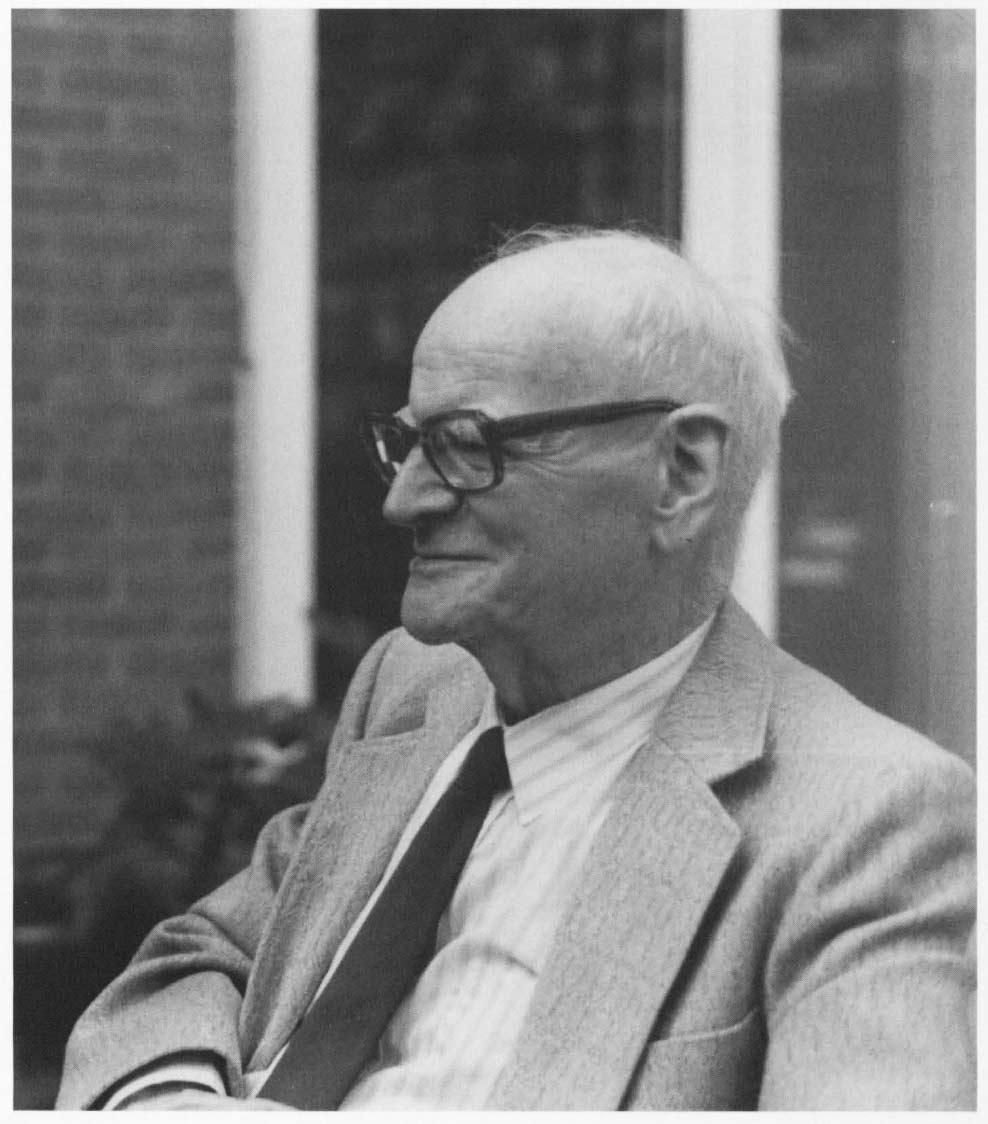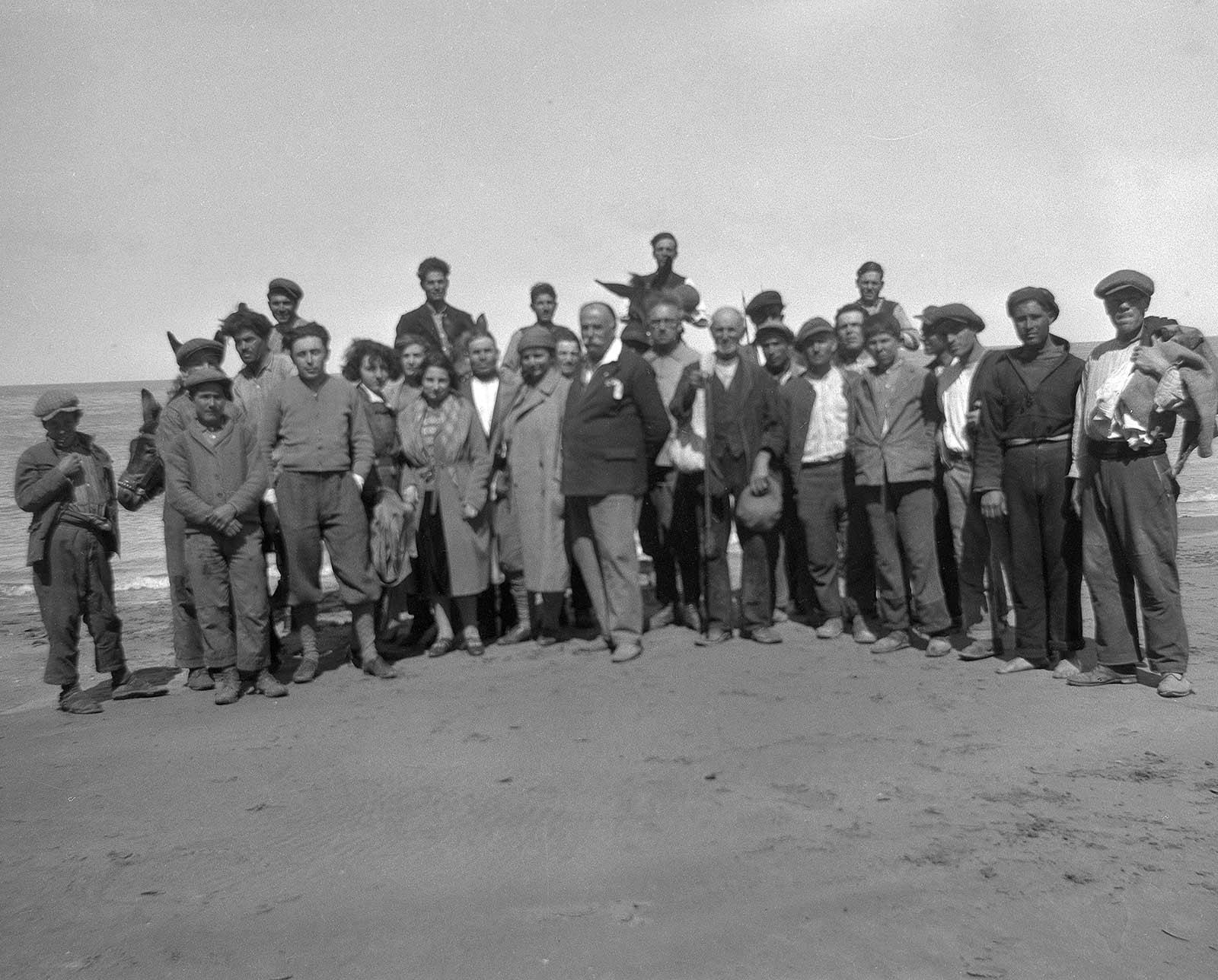

In April 1952, 400 prints were made of the lithograph Contrast (Order and Chaos). By machine, due to the enormous circulation, but under the watchful eye of Escher. It was a commission from the VAEVO (Association for the Promotion of the Aesthetic Element in Secondary Education), which would be distributing the prints to schools in the Netherlands. This would render his work accessible to young people.
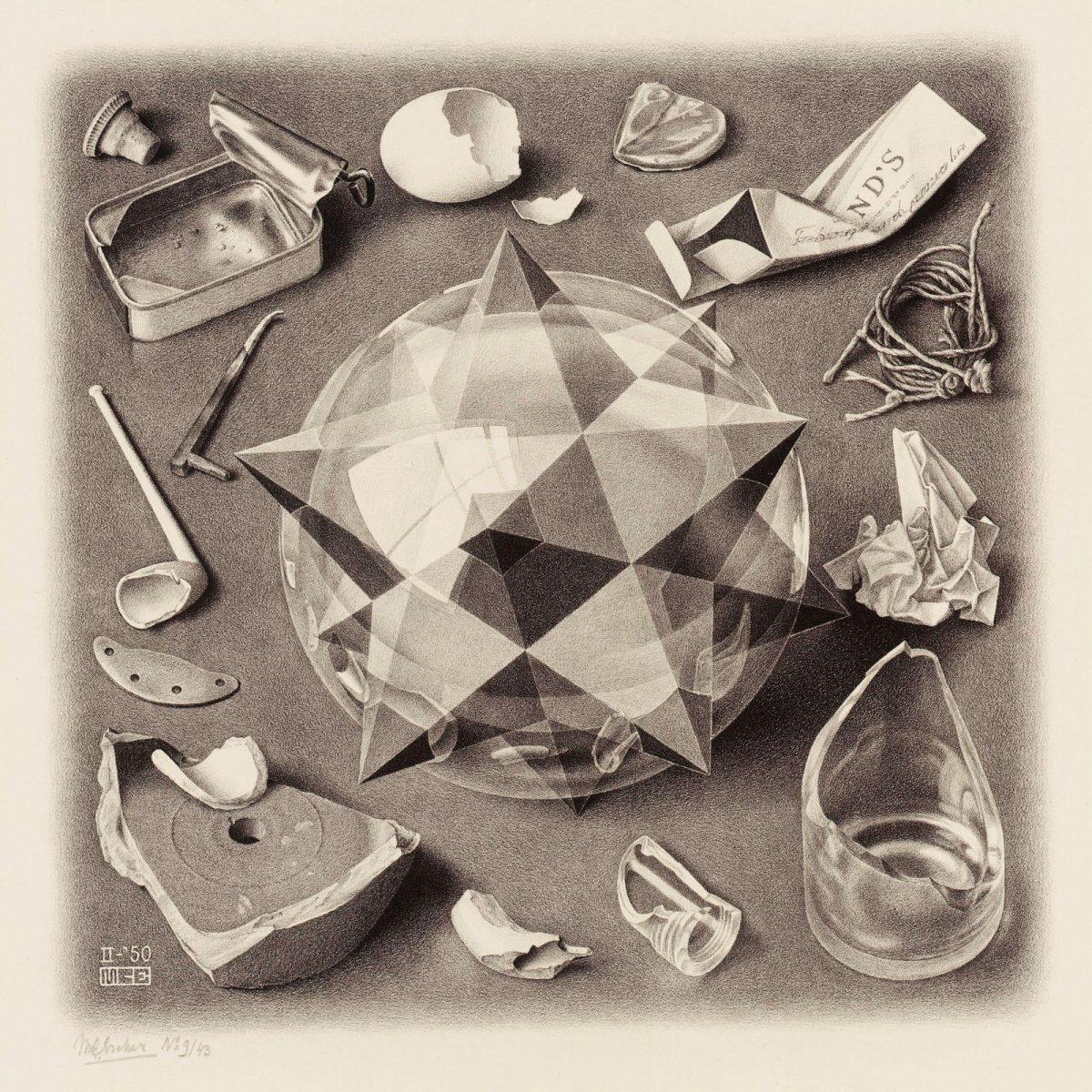
The Netherlands has a long tradition when it comes to bringing the ‘people’ into contact with art. For example, there were organisations such as the Nederlandsche Vereeniging tot Bevordering van het Schoonheidsbeginsel in het Onderwijs (promoting the principle of beauty in education), the Vereeniging voor Schoonheid in Opvoeding en Onderwijs (beauty in education) and Kunst aan het Volk (art for the people). All were aimed at making art more widely accessible, enabling as many people as possible to enjoy it. The belief that workers should also be surrounded by beautiful design, be this in their home environment or workplace, was strongly propagated.
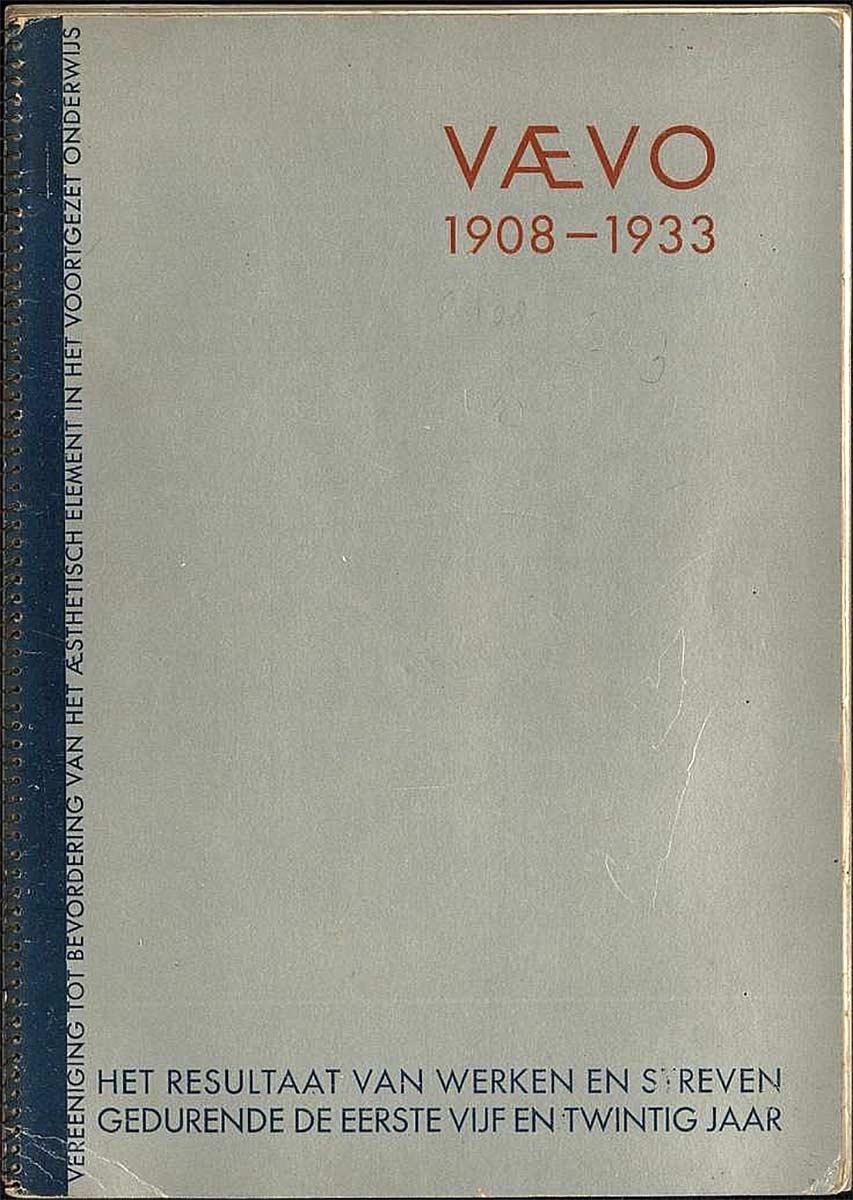
This edification of the worker was inspired by the British Arts and Crafts movement, the Scandinavian teaching method Slöjd and the ideas of the British economist Arnold Toynbee (1852-1883). As a common denominator, these sources emphasised craftsmanship and self-expression through art. The VAEVO was also an association focusing on such edification. It was founded in 1908 with the specific aim of fostering the cultural education of young people. The association is responsible for exposing large numbers of Dutch schoolchildren to Escher’s work (NB During secondary education. The VAEVO believed a primary school child was not ready for proper art yet).
Prints in high circulation
Escher is one of the artists who supplied prints to the association multiple times. This started as early as 1929 with the woodcut The Second Day of the Creation (The Division of the Waters), which Escher had produced in December 1925. 300 copies were printed, considerably more than the standard VAEVO editions. More prints would follow, always in high volumes: Up and Down in 1948, 400 copies; Contrast (Order and Chaos) in 1952, also 400 copies; and Three Worlds in 1956, a massive 700 copies of which were circulated. When these were printed, Escher always made sure that a copy went to his old high school in Arnhem. In 1966 the lithograph Belvedere followed, to be used in school classes in Suriname and the Netherlands Antilles. The association’s recommendation committee included the directors of the most important museums and professors in art history. And this was something Escher was well aware of.
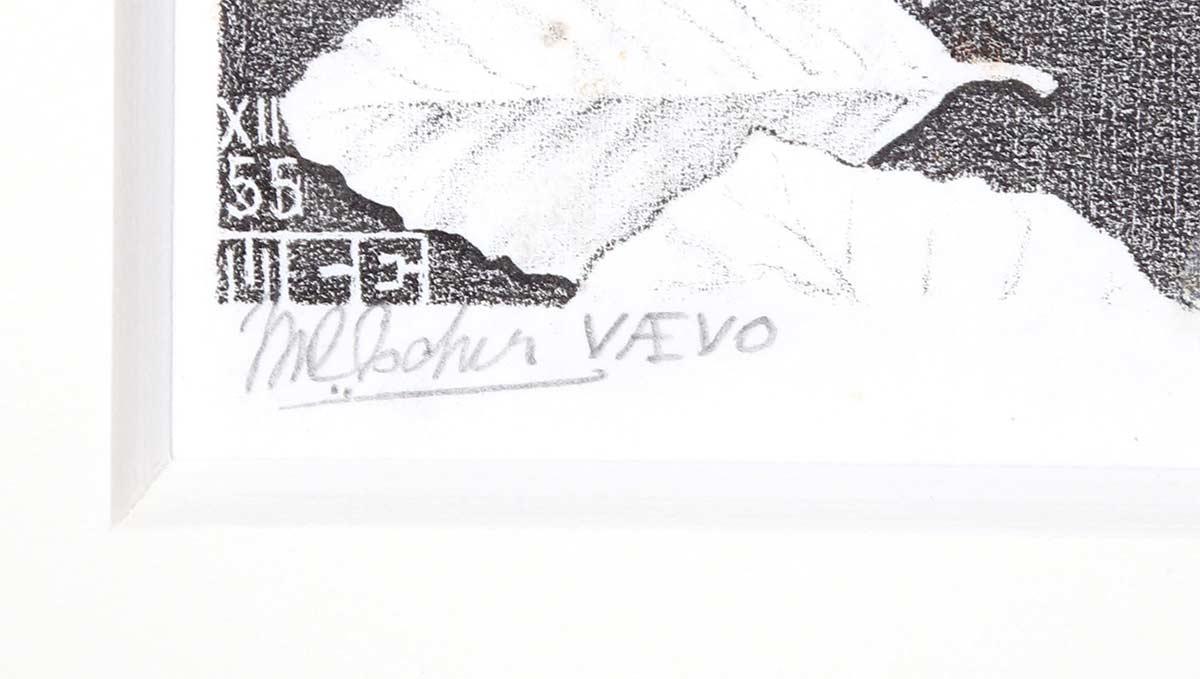
The contact person for Escher was Mr B. Merema, secretary of the VAEVO. He and his wife M. K. Merema - Van Gestel were the driving force behind the association for many years. In 1952, the association was also keen to promote the work of Escher among students in a different way. With the help of the Polygoon in Haarlem, they made a filmstrip featuring 30 works that could be projected in schools. Escher thought it was a good idea, writing in a letter to Merema:
'Dear Mr Merema,
I can only applaud the plan to bring visual arts products to young people through filmstrips, because I understand the advantages that this practical, modern means of representation offers over the old method. I am therefore happy to cooperate as far as my own work is concerned. In recent years I have been giving lectures about my work on the basis of lantern slides of my prints; during the projection, I talk about the intentions and incentives that led to the design.’
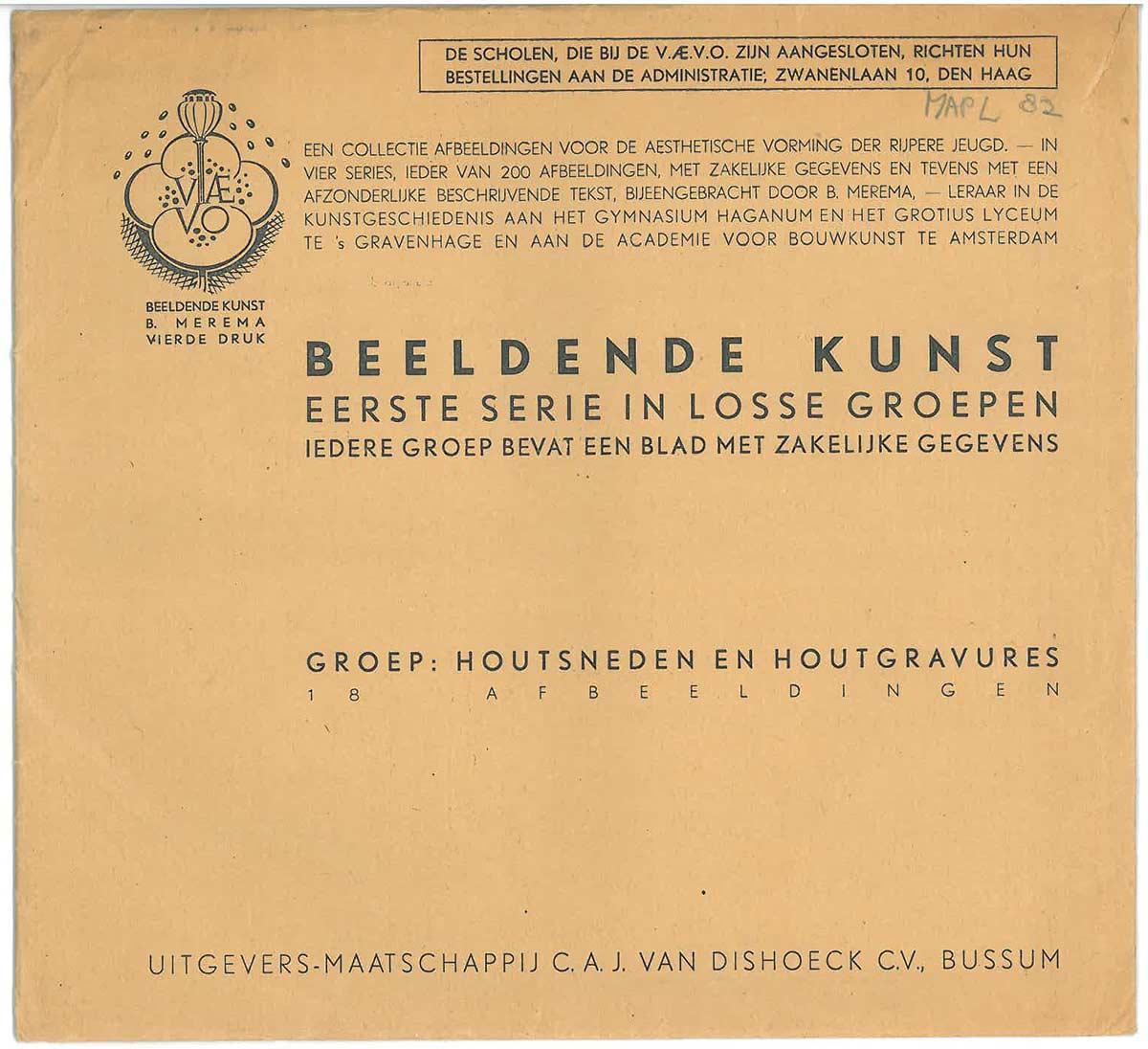
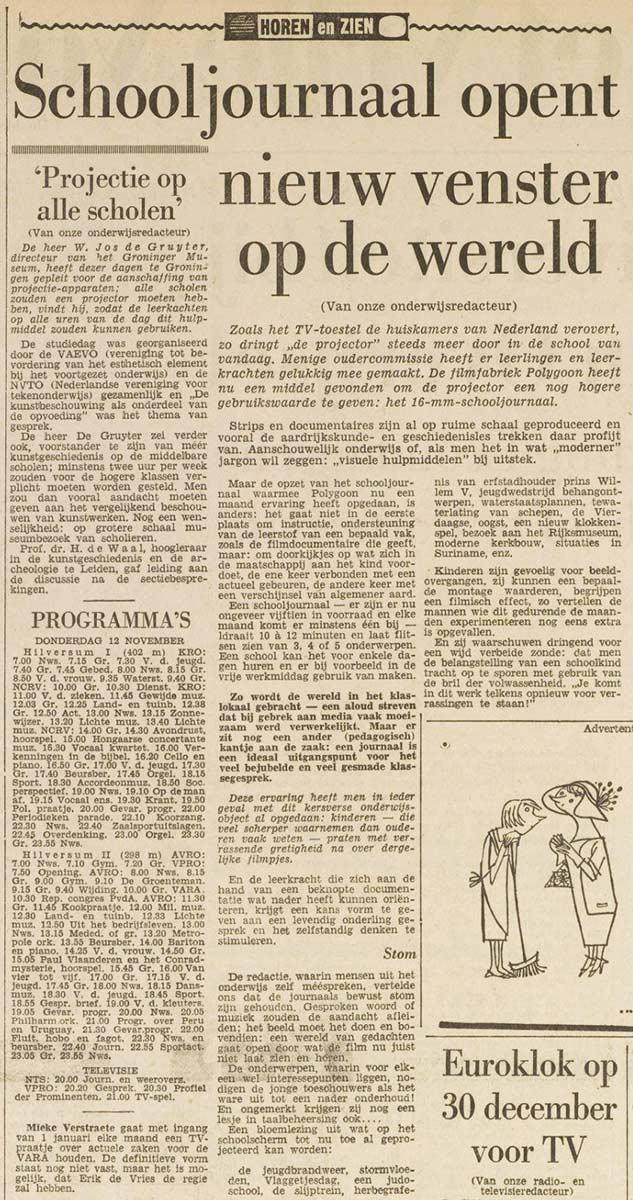
Travelling exhibition
In addition to its own VAEVO publications, the association also worked with a peripatetic collection for wall decoration, which enabled affiliated schools to have a large collection of art images in-house. The images in this peripatetic exhibition took the form of large school plates and were transported in crates. After use, the collection was moved on to the next school. There was also a peripatetic collection of aesthetic teaching materials, containing a varying selection of works of art that class teachers could use in their lessons. This travelled throughout the country too, and also included works by Escher. The goal is elegantly described in the introduction:
A collection of images for the aesthetic education of more mature young people. In four series, each comprising 200 images, with business details as well as a separate descriptive text, compiled by B. Merema - teacher of art history at the Gymnasium Haganum and the Grotius Lyceum in The Hague and at the Academy of Architecture in Amsterdam.
In addition, the association also came up with its own book editions about artists, art movements and its own collection. It also organised exhibitions featuring work by students, and secretary Merema gave many lectures on the importance of the artistic education of ‘more mature young people’. At the end of the 1940s, 330 schools were affiliated with the VAEVO: 26 grammar schools, 61 lyceums, 124 higher civic schools, 40 teacher training schools, 32 lab technician schools and 47 schools that do not fall within one of these categories.
More Escher today

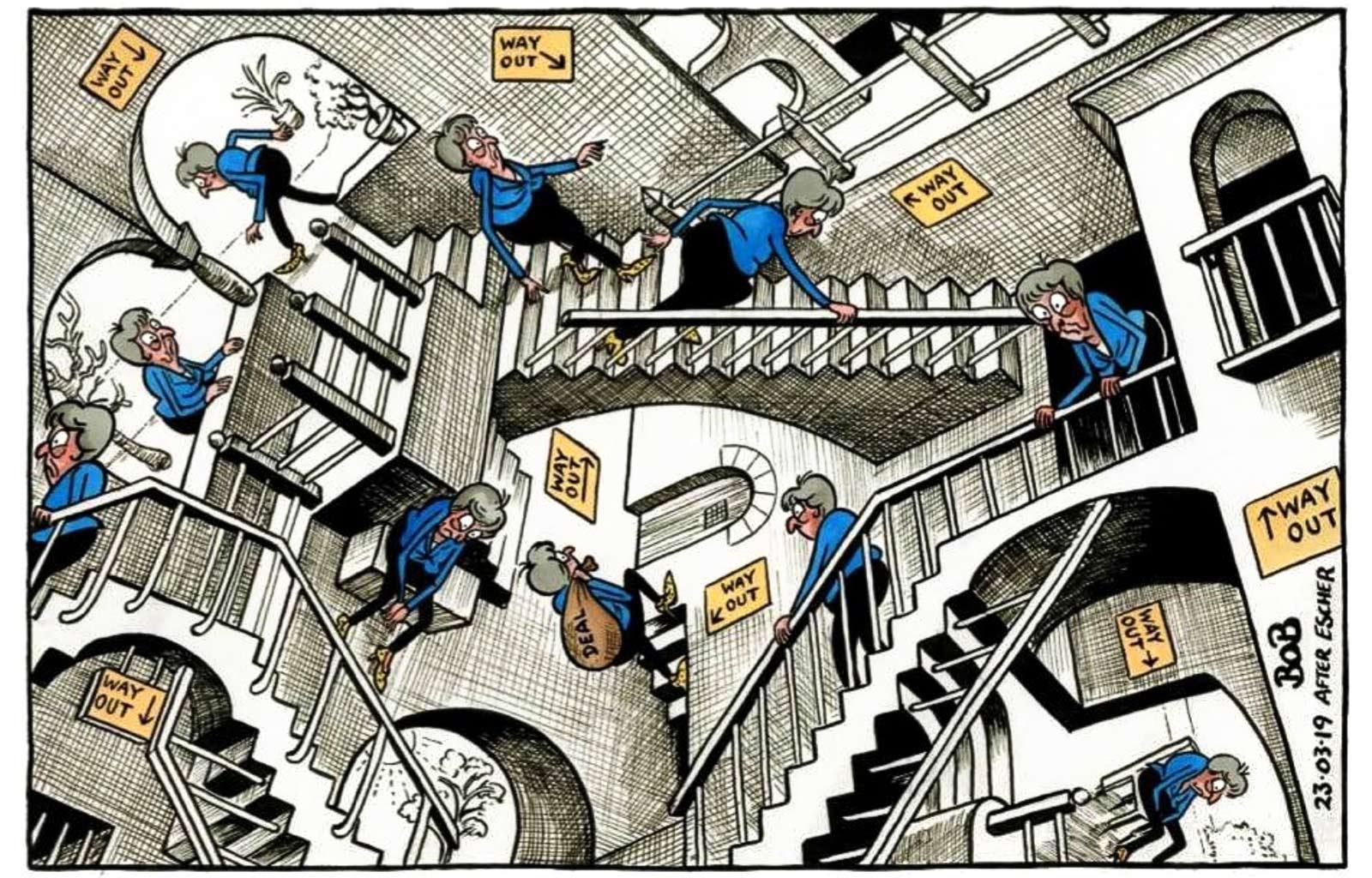
The Brexit labyrinth
